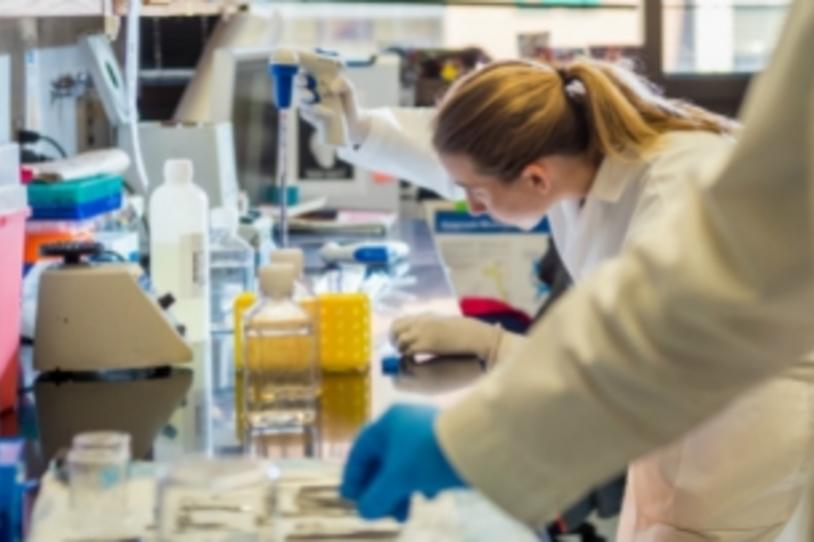
In October and November, The Michael J. Fox Foundation (MJFF) funded 44 new grants totaling more than $19.7 million. The latest projects in our portfolio aim to make progress in critical areas of Parkinson’s research including developing new treatments, finding new ways to diagnose disease earlier and deepening the understanding of disease mechanisms.
This total does not include MJFF grants to the Aligning Science Across Parkinson's (ASAP) initiative's Collaborative Research Network and Global Parkinson's Genetics Program (GP2).
Read a selection of our recently funded projects that will bring us closer to finding a cure for Parkinson’s disease and lead to breakthroughs for patients living with the disease today. For more information on other MJFF-supported programs, visit our Funded Studies page.
Innovative Treatments to Prevent Disease Progression and Control Symptoms
The Foundation invests in new approaches to treat disease progression and symptoms, including the following diverse projects:
- Paul Gregor, PhD, at GISMO Therapeutics Inc. is testing a drug candidate in laboratory studies that may block buildup of alpha-synuclein protein clumps, which are found in brain cells in Parkinson's. Researchers believe that preventing this buildup may stop disease.
- Jordan Schultz, PharmD, at the University of Iowa is also looking at a way to stop Parkinson’s. His group is testing terazosin, a drug used to treat high blood pressure and enlarged prostate, in models of Parkinson’s. Some studies have shown that people who took terazosin had a lower risk of Parkinson’s. This drug can raise the amount of adenosine triphosphate (ATP) in cells, which is a critical source of energy but produced in lower levels in Parkinson’s. This data could guide future clinical trials of terazosin and other medications aimed at increasing ATP.
- Against symptoms, Beatrix Feigl, MD, at Queensland University of Technology is testing newly developed light technology that illuminates certain cells in the eyes to improve non-motor and motor behaviors related to sleep disruption.
- Adrian Newman-Tancredi, PhD, DSc, at Neurolixis, Inc. is starting a clinical trial of NLX-112, a drug that shows promise in easing levodopa-induced dyskinesia, uncontrolled jerky movements. Many patients develop this side effect after years of levodopa treatment and advancing disease. This trial is supported in partnership with Parkinson’s UK.
- Christopher Whitlow, MD, PhD, at Wake Forest University is evaluating a device fashioned like headphones that can activate the vestibular system, a sensory network with pathways spreading throughout the brain. This study will test the impact of vestibular stimulation on symptoms associated with Parkinson’s disease.
Finding Biomarkers for Earlier Diagnosis and Personalized Medicine
MJFF also funds the discovery of more accurate methods to diagnose Parkinson’s earlier. This round of grants included projects to develop tests for Parkinson’s onset and progression as well as to better predict symptoms and subtypes, including the following:
- Jonathan Blackburn, PhD, at Sengenics Corporation Pte Ltd. is looking for autoantibodies (antibodies that mistakenly target and react with a person's own tissues or organs) in people with Parkinson’s risk factors. Autoantibody biomarkers measured in body fluids may help diagnose Parkinson’s earlier.
- Chester Mathis, PhD, at the University of Pittsburgh School of Medicine is developing imaging tracers to visualize the proteins alpha-synuclein and tau in the living brain. Clumps of these proteins are common in brain diseases such as Parkinson’s and frontal temporal dementia, respectively. This would be useful as a diagnostic tool and to follow disease progression.
- Inga Peter, PhD, at Icahn School of Medicine at Mount Sinai is identifying a combination of genetic, inflammation and gut bacteria markers to define subtypes of Parkinson’s. Cataloguing subtypes may lead to personalized therapies based on those profiles.
- Marion Buckwalter, MD, PhD, at Stanford University is studying whether more inflammation occurs relative to dementia and whether more severe inflammation leads to greater memory loss in Parkinson’s. Understanding this relationship could help predict or measure dementia.
Improving Development and Use of Therapies against Priority Target LRRK2
Other recently funded studies focus on the biology of Parkinson’s, including new projects on the priority target LRRK2. Mutations in the LRRK2 gene lead to greater LRRK2 protein activity and raise the risk for Parkinson’s. MJFF-funded research has shown greater LRRK2 activity even in people with Parkinson’s without a LRRK2 mutation, and therapies to lower this activity are already in human trials. Funding research on this target is critical to developing new therapies and expanding their use, such as:
- Michael Henderson, PhD, at the University of Pennsylvania is evaluating the impact of LRRK2 mutations and inhibitors on tau pathology. The protein tau, like alpha-synuclein, can form clumps in the brains of people with Parkinson’s, as well as people with other conditions such as dementia. These findings may lead to LRRK2 drugs that could work for other neurodegenerative disease populations.
- Eng-King Tan, MBBS, at the National Neuroscience Institute Singapore is investigating different LRRK2 mutation variants found in Asian populations and their impact on cell function. This work may point to new ways to intervene in the LRRK2 pathway and help identify patients who would benefit from treatments in clinical trials.
- Sebastian Virreira Winter, PhD, at OmicEra Diagnostics GmbH is using state-of-the-art technology to study hundreds to thousands of proteins in urine samples to identify and validate markers of LRRK2 activity. Such markers could improve our understanding of the role of the LRRK2 gene in Parkinson’s and the design of treatment trials.
The diversity of projects we fund is possible due to your generous support of Parkinson’s research. Learn more about how you can help scientists better treat, measure and define Parkinson’s disease.